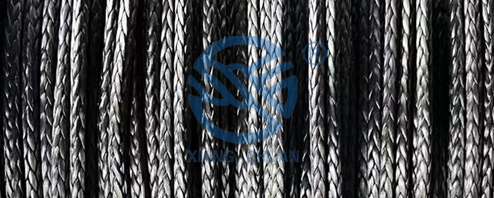نحن الصناعة

When replacing mooring tails on a vessel, there are several important factors to consider in order to ensure the safety and security of the vessel while at anchor or at dock. Mooring tails are essential components of a vessel's mooring system, connecting the ship to the anchor or docking facility. Therefore, it is crucial to carefully consider the following aspects when replacing mooring tails:
1. Material: One of the most important factors to consider when replacing mooring tails is the material used in their construction. Mooring tails are typically made of synthetic materials such as nylon, polyester, or aramid fiber. Each material has its own advantages and disadvantages in terms of strength, durability, and resistance to wear and tear. It is important to choose a material that is suitable for the specific requirements of the vessel and operating conditions.
2. Strength: The strength of the mooring tails is crucial for ensuring the safety and security of the vessel. The mooring tails should be able to withstand the loads and forces exerted on them during mooring operations, such as wind and wave action, as well as the weight of the vessel itself. It is important to choose mooring tails with a sufficient breaking strength to handle these forces without compromising safety.
3. Length: The length of the mooring tails is another important consideration when replacing them. The length of the mooring tails should be appropriate for the depth of the water in which the vessel is moored, as well as the height of the dock or mooring facility. It is important to ensure that the mooring tails are long enough to provide adequate slack for movement of the vessel while also preventing excessive slack that could lead to the vessel drifting off course.
4. Diameter: The diameter of the mooring tails is also an important factor to consider. The diameter of the mooring tails should be appropriate for the size and weight of the vessel, as well as the loads and forces exerted on them during mooring operations. Mooring tails with a larger diameter are generally stronger and more durable, but may also be heavier and more difficult to handle.
5. Inspections and Maintenance: Regular inspections and maintenance of the mooring tails are essential for ensuring their effectiveness and safety. It is important to inspect the mooring tails for signs of wear and tear, abrasion, or fraying, as well as to check for any damage or deterioration that could compromise their strength and integrity. Any damaged or worn mooring tails should be promptly replaced to prevent potential safety hazards.
6. Compatibility: When replacing mooring tails, it is important to ensure that they are compatible with the existing mooring system and equipment on the vessel. The mooring tails should be able to be properly attached to the anchor or docking facility, as well as to the vessel itself, in a secure and reliable manner. It is important to consider the type of connections and hardware required for the mooring tails to ensure proper installation and operation.
In conclusion, when replacing mooring tails on a vessel, it is important to carefully consider the material, strength, length, diameter, inspections and maintenance, and compatibility of the mooring tails to ensure the safety and security of the vessel while at anchor or at dock. By taking these factors into account, vessel operators can ensure a reliable and effective mooring system that meets the specific requirements of their vessel and operating conditions.
عنوان:
رقم 8 طريق تشنغنان، مجمع تشنغنان الصناعي، مقاطعة باويينغ، جيانغسو الصين
بريد إلكتروني:
E-mail1:vanzer@xcrope.com Vanzer Tao
E-mail2:sales@xcrope.com Wang Peng
E-mail3:grace@xcrope.com Grace Li
E-mail4:info@xcrope.com David Cheng
هاتف الشركة:
+86-514-88253368
قسم المبيعات الخارجية:
+86-514-88302931



حقوق الطبع والنشر © جيانغسو شيانغتشوان حبل التكنولوجيا المحدودة | كل الحقوق محفوظة